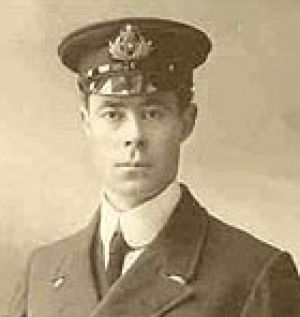
Harold Lowe
From Caernarfonshire, Wales
Commander Harold Godfrey Lowe RD RNR wrote his name into history as a hero for actions during the loss of the White Star Ship, TITANIC.
Harold is portrayed by Welsh actor Ioan Gruffudd in the James Cameron movie 'Titanic' where we have a sense of the urgency and danger he was facing.
As the ship's Fifth Officer he was instrumental in organising the release of lifeboats and having taken his own charge to safety away from the stricken vessel was so appalled to see passengers in the sea organised the lifeboats to create more room and return to rescue as many as possible.
Harold played his part in the First World War with the Royal Naval Reserve, gaining the rank of Commander before retiring to Deganwy with his family.
Born in Eglwys Rhos, Caernarfonshire (North Wales) he was the third of eight children. It's reported that his parents George and Harriet had ambitions for him to follow an apprenticeship in Liverpool, England in the hope this would lead to business opportunities. Harold was however more interested in becoming a mariner.
By 1896 the fourteen year old left home in Barmouth (Wales) and entered the Merchant Navy as a lowly Cabin Boy. While performing these duties (basically attending the needs of passengers or officers aboard) in true apprentice fashion he also studied, working towards his marine certificates. It took ten years to learn and pass for certification into officer classes. This allowed him to epand his career away from the schooners serving the Welsh coast. With a Second Mate's Certificate in 1906 he set off to serve aboard ships on African routes yet he continued his studies. Another five years of experience lead him to a Master's certificate, this opened new opportunities too, with IMM (International Mercantile Marine), holding company of White and Red Star shipping companies.
Contra to popular belief he may not have been a White Star employee when starting with IMM in 1911. It's worth noting, while White Star famously offered passenger services the sister company Red Star specialised in cargo transport. Harold was scheduled to crew 'The Belgic', a Red Star ship.
HIS CAREER DEVELOPED, BUT WE HAVE TO GUESS HOW...
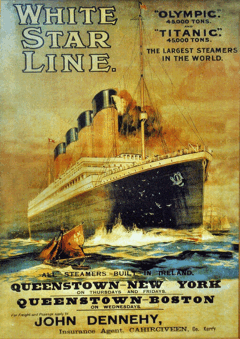

Given the travel time from Liverpool to Belfast and then boarding procedures Harold would have been about a day getting to the shipyards and find himself on duty. He only had six days aboard the Titanic to familiarise himself with the vessel and fellow crew. This was a brand new ship about to leave on its maiden voyage so we can only imagine the rush and long hours they had in preparation. H&W had the keel laid almost exactly three years earlier, on the 31st March 1909. These hasty days were the last of three years of effort. Sea trials were by today's standards cursory to say the least, just one day so Harold and his fellow officers would have been rushed off their feet.
It is recorded that in the morning of April the second 1912 eight officers including Harold boarded she left her place of birth, H&W dock yard 401 and went to 'open water' to conduct sea trials. She passed inspection within eight hours and was certified as fit for purpose. Two hours later she was on her way to Southampton to collect the first of the passengers. During her trials she had made twenty knots and no difficulty making Southampton in good time. It is logged, she arrived soon after midnight on the 3rd of April.

This was Easter so activity around the docs was slow. Never the less, the bulk of the crew were being hired and piece by piece cargo was being loaded. It's interesting to know, there was a coal strike during this period so the black gold was difficult to get hold of. White Star had to borrow coal for the Titanic from other vessels in its fleet. We can only guess at the officers duties during this period. Although the ship had it's sea worthy certificate there were still checks going on, all the officers would have been engaged in preparation duties as normal as well as special tasks related to this, the maiden voyage. Inspections continued practically to the point of departure.

Up to this point the only people aboard were officers and crew. On the morning of the 10th April the rush began, boat trains brought the rich from London, everyone else got there any way they could. The boarding ramps were closed by noon, anyone arriving would think themselves unlucky, later to be thankful they missed the boat.
On that morning while the passengers arrived Harold helped to check the life boats. This gives us an indication that of all the officers he clearly had the opportunity to familiarise himself with the boats and their launch mechanisms. Captain Smith kept to the time table and quickly after twelve noon she set off for Cherbourg, France. This was the normal routine for transatlantic crossings for White Star ships. The Titanic arrived there about five hours later staying just long enough for passengers to board and by 8:30 she was off again, towards Ireland with Harold on duty on the bridge.
On April the 11th she arrived at Queenstown (Cobh) Cork, Ireland. This was another opportunity to allow press coverage of this momentous journey. This port is not listed in the official White Star Lines itinerary but it was normal to include ports if they felt there was a passenger demand. White Star always looked at the bottom line, more passengers, more profit. Harold's gieldfriend, later his wife was concerned that he was eating well. Some of the ships he sailed with had provided dull and unappetizing meals for the crew. So here in Ireland he took the oppotunity to send her one of the restaurant menus as a keepsake.
The Titanic steamed away at twenty one knots the following day, around the south of Ireland and out into the Atlantic.

The ship hurled itself through a calm Atlantic at speeds of up to 22 knots. It's thought that even though there were multiple ice warnings the captain, Edward Smith ignored them ordering full speed ahead. There's some controversy here. Captain Smith was one of the most respected commanders of his day. He was also the highest paid marina in 1912 and this was actually to be his last voyage. He was about to retire. On board technically as a passenger was J. Bruce Ismay, then current chairman and managing director of the White Star Line. To all tense and purposes not just Smith's boss but the owner of the ship.
The controversy surrounds conversations between Ismay and Smith regarding the arrival date in New York. The previous year Titanic's sister ship the Olympic set a record averaging 22.5 knots. It's thought Smith went against his own judgement due to pressure from Ismay.
It's often thought that until the collision it was an uneventful journey, not so. A fire had been discovered in a coal bunker which had caused delay and damage, they were dealing with this while at port in Ireland. Also, although they had the revolutionary new communication system 'the telegraph' provided by sub contractor Marconi the two operatives were not mariners per se and were working around the clock sending passenger messages. Their pay was determined by the number of messages they sent. Clearly, shipping messages were prioritised yet given the equipment failure and thus the backlog of work it's easy to see how this would become critical.
This recent breakthrough meant that shipping could relay dangerous conditions. Essentially, the only other means they had of early warnings were the lookouts in the crows-nest. Infamously, on the Titanic these men didn't have the binoculars they were supposed to. An oversight from the beginning when Smith changed the officers in Belfast.
All the experienced crew would have known that there had been ice alerts and on a calm sea this was very dangerous. With normal or rough sea icebergs can be seen from safe distances because of spray and breaking waves. On calm waters they can be invisible and on Titanic's maiden voyage the see was remarkably still. Each experienced officer would have been concerned at this speed over these waters.

Ice warnings from ships in the vicinity came through frequently, the wireless operators Jack Phillips and Harold Bride had been taking these warnings all day. Perhaps because they were stressed and tired or simply because they had already delivered many warnings or just that they were not actually employed by White Star. Whatever the reason, Phillips and Bride failed to report all the warnings to the officers.

ABOVE: This iceberg was photographed in the vicinity of the disaster, it could be the cause of the disaster!
While Bride slept, senior wireless operator Phillips took an ice warning from an operator called Cyril Evans aboard 'The Californian'. Losing his temper he replied 'SHUT UP' to which Evans did and went 'off-duty'. Evans had done his job, he delivered the message and had a response. This became a horrendous scenario because although there were ships in the area the Californian was the only within reach of the Titanic.
Harold Lowe had also gone 'off-duty' leaving Sixth Officer James Moody on watch. Moody took a call from Seaman Fleet in the crows-nest at 11:40pm warning of ice ahead. They swung into action to avoid the ice and as history tells us, unfortunately failed. Recent examinations of the wreckage and computer simulations suggest the ship didn't actually hit the ice straight on but glanced. Because icebergs can have a shelf just under the surface the Titanic may have run aground. The blow was hardly felt, just a shudder. Harold didn't even wake, he slept through the impact. The majority of the passengers who were awake late only knew something was 'odd when the engines stopped (there was some ice on deck, as in the Cameron movie). This was just before midnight on April the 14th 1912. The ship would soon be two miles below the Atlantic, she actually sank early hours of April the 15th. The disaster unfolded in minutes.
Just a thought: The James Cameron movie 'Titanic' has a running time of 194 minutes. They struck the ice close to 11:40pm and the ship disappeared at 2:20am, a total of 160 minutes. Which means, if we could go back in time with a DVD of the movie and start playing it when Titanic hits the ice, we would be in the water BEFORE the movie ends.
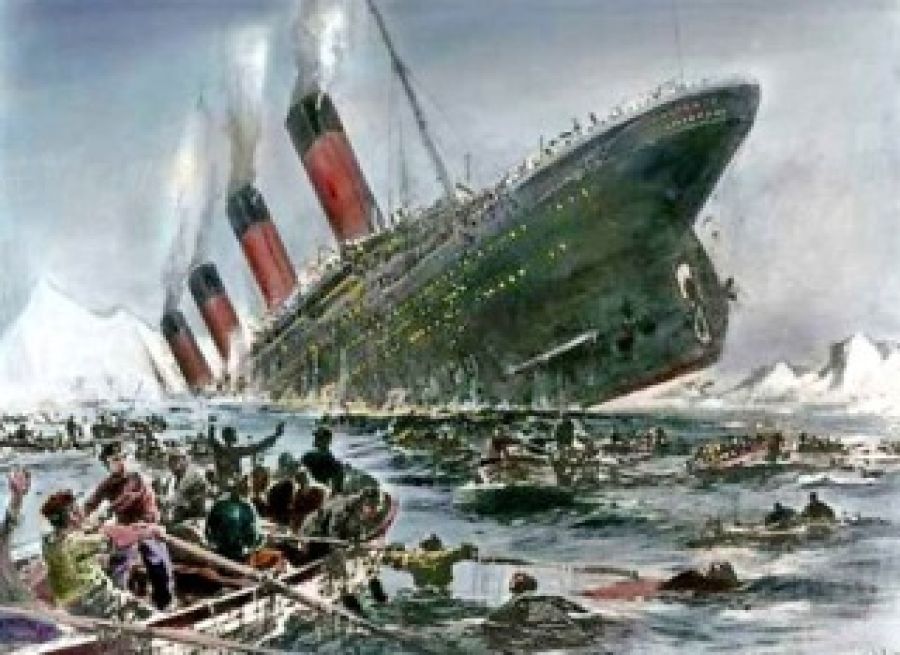
BECOMING A HERO
Harold Lowe slept through the impact waking some thirty minutes later when the fuss in the corridor was enough to wake an exhausted man. He instinctively knew something was wrong reached for a revolver before leaving his cabin. This is quite unusual because the pistol was not regulation, taking it was foresight. All survivors later gave evidence and he was questioned on 'sleeping through the collision' yet waking at the fuss. he's quoted saying "We officers do not have any too much sleep, and therefore when we sleep, we die."
You may remember earlier Harold was one of the officers inspecting the life boats in dock. He shared a concern with the other officers that if the boats were lowered fully loaded they may break under the weight. Sadly H&W had actually tested this scenario and the boats passed but it seems the officers were not aware of this. IN the circumstances they had to improvise and use their best judgement. They decided it would be safer to lower the boats partly filled, then finish loading them in the water.
There were numerous incidents of panic reported and a general rule of women and children first was observed. Harold helped lower a number of boats, in particular a boat which kept sticking, bow, stern, bow stern.
This was distressing for all, it so happens that Bruce Ismay was there too.
Connection: born in Port Talbot, Wales
WHAT HAPPENS WHEN 'THE BOSS' GOES MAD...
From the reports, to be fair to Ismay it seems he was concerned enough to risk his own life by swinging out on one of the lowering ropes to free it from a stuck pulley. He shouted at Harold in panic, to which Harold (in officer classes quite high yet addressing the most powerful man in the White Star Line) replied with his own orders and 'shouted down' Ismay's panic with derision and common sense.
HIS ACTIONS WHILE ABOARD THE STRICKEN TITANIC ARE IN THEIR OWN RIGHT NOTEWORTHY.
Ordered to command one of the lifeboats it was later, after the ship sank he truly became a hero. While freeing the life boats from the ship there was at least one incident where he used his revolver to defend the passengers from being 'swamped' by panicking crowds. Later, seeing so many in the shockingly cold water and such space available on the life boats he created a mini-armada to share the load and free space for a boat to go in search of survivors in the dark waters.
The confusion of that night continued long after, in fact, arguably to this day. There was an investigation in America and another in England. Some statements contradict others. The majority of references to Fifth Officer Harold Lowe are commendable stating his leadership was correct, prudent and heroic. Together with his passengers he was rescued by RMS Carpathia the following morning.
He was a key witness in both inquiries, American and British returning to his home town soon after. Barmouth residents presented him with a gold watch in appreciation of his efforts. A year later Harold married and with wife Ellen had two children, a boy and a girl.
He played his part in the First World War with the Royal Naval Reserve, attaining the rank of Commander before retiring to Deganwy with his family. He past away in May 1944 at the age of 61 and was buried at the Llandrillo-yn-Rhos church in Rhos-on-Sea, North Wales.
As a footnote, the menu of the first meal served aboard the Titanic, which Harold sent to Ellen (then his fiancée) while the ship was docked in Ireland sold at auction for £76,000.

Titanic Puzzle
CubicFun 3D Jigsaw Puzzles for Adults LED Titanic Toys Model Kits Ship, Difficult Jigsaw Family Puzzles and Cruise Ship 3-D Puzzles Gifts Home Decoration for Kids and Adults, 266 Pieces
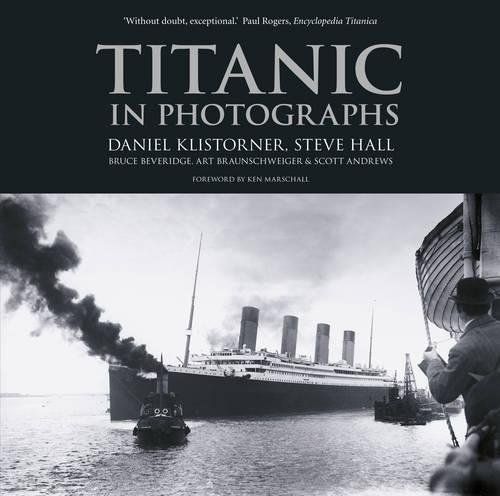
Titanic in Photographs
In this evocative collection of photographs the full story of Titanic is told, set against the backdrop of the great race to build the biggest and best passenger liner. From her genesis in the shipyard of Harland & Wolff to the anticipation of her launch and through her fitting out and sea trials, the excitement of Titanic s maiden voyage is keenly evident in the many rare and unusual images in this book.

Titanic (DK Eyewitness)
More than a century after its sinking, Titanic remains the world's most famous ship. This is the ultimate information-packed account of the luxury liner's history, from its incredible construction to its total destruction.
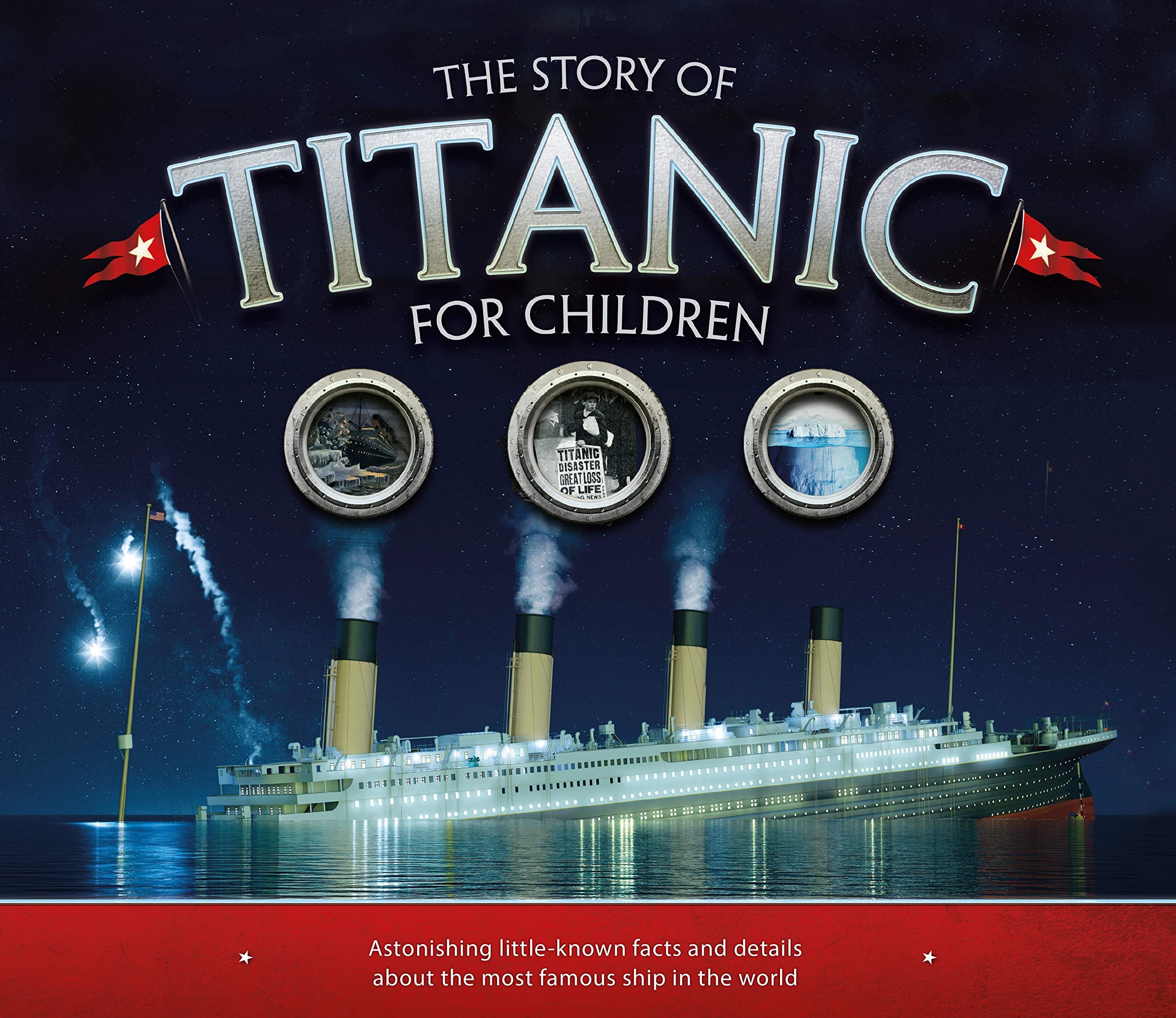
The Story of the Titanic for Children
Explore the beautiful sundecks, marvel at the luxurious design and relive the tragic sinking of the world's most famous ship with The Story of the Titanic for Children.